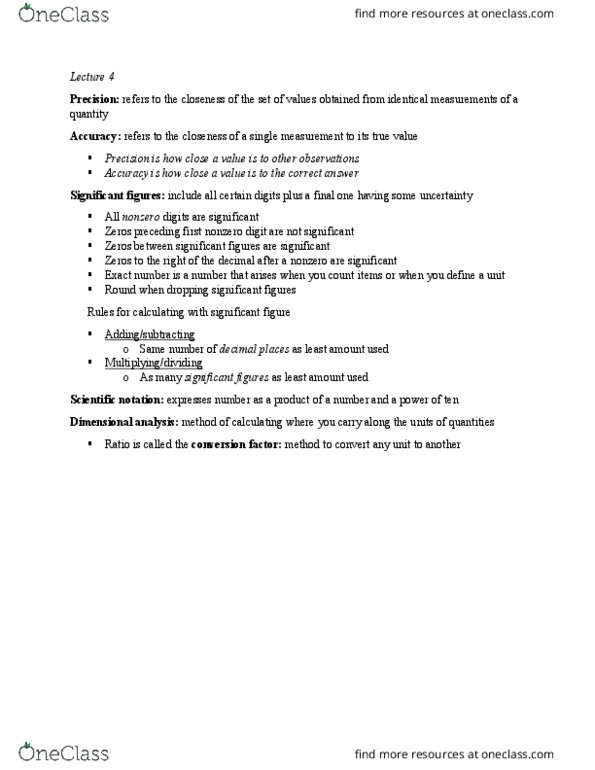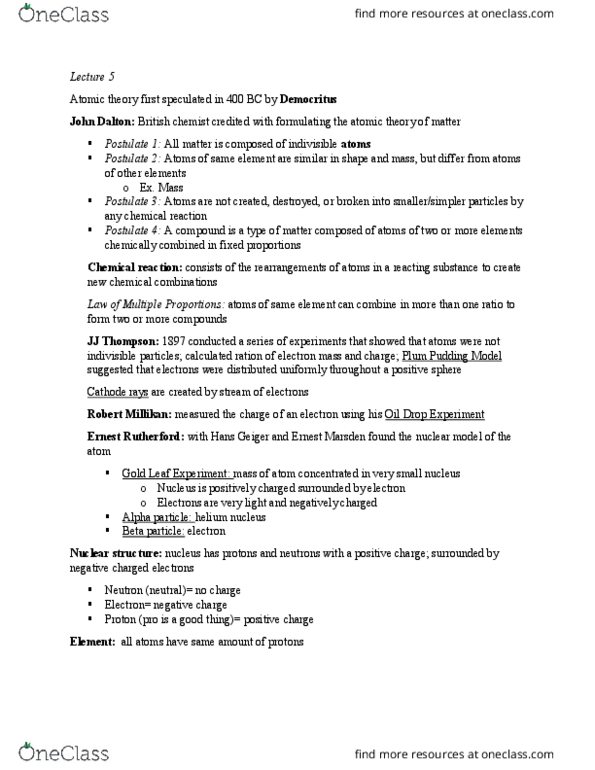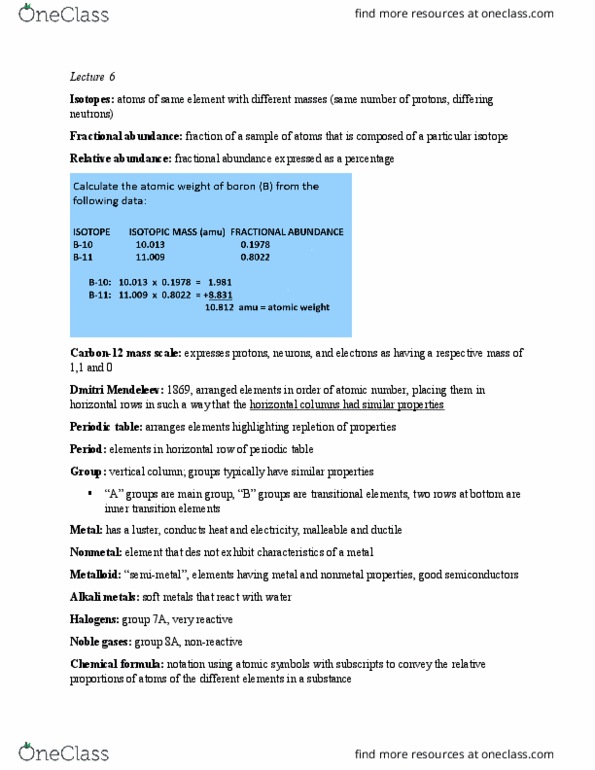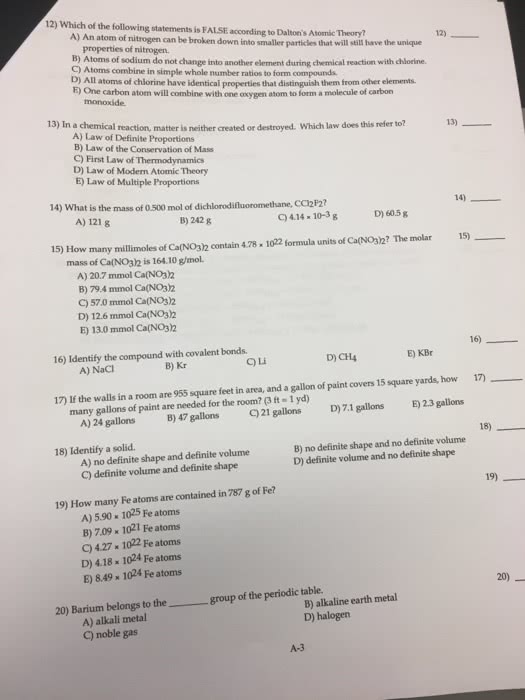CHE 106 Lecture Notes - Lecture 6: Ernest Marsden, Ernest Rutherford, Hans Geiger
CHE 106 verified notes
6/42View all
Document Summary
Atomic theory first speculated in 400 bc by democritus. Chemical reaction: consists of the rearrangements of atoms in a reacting substance to create new chemical combinations. Law of multiple proportions: atoms of same element can combine in more than one ratio to form two or more compounds. Jj thompson: 1897 conducted a series of experiments that showed that atoms were not indivisible particles; calculated ration of electron mass and charge; plum pudding model suggested that electrons were distributed uniformly throughout a positive sphere. Cathode rays are created by stream of electrons. Robert millikan: measured the charge of an electron using his oil drop experiment. Nuclear structure: nucleus has protons and neutrons with a positive charge; surrounded by negative charged electrons: neutron (neutral)= no charge, electron= negative charge, proton (pro is a good thing)= positive charge. Element: all atoms have same amount of protons. Nuclide: characterized by definite atomic number and mass number.







